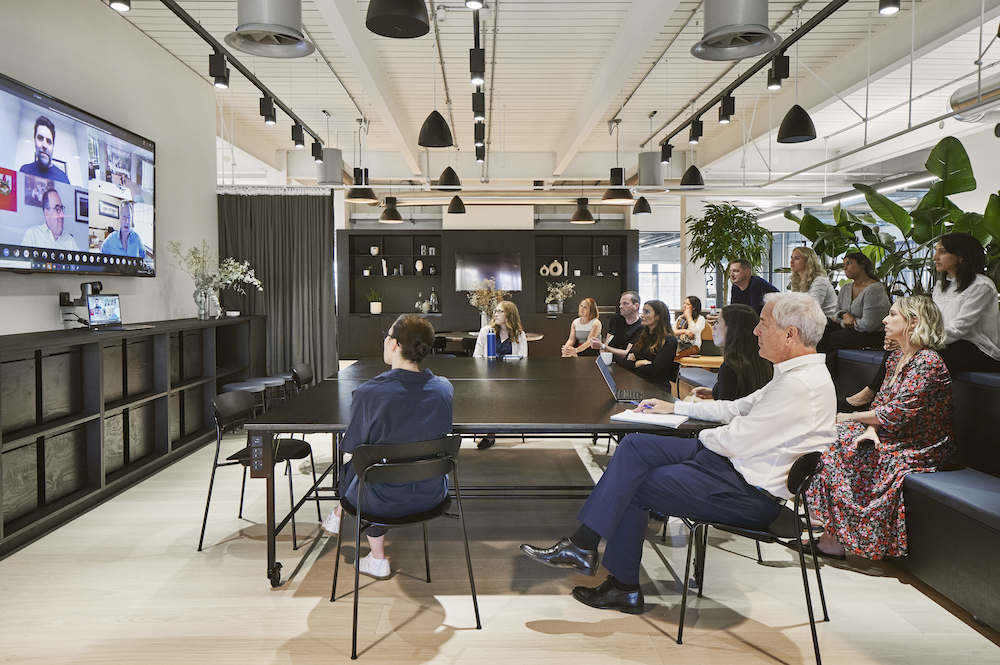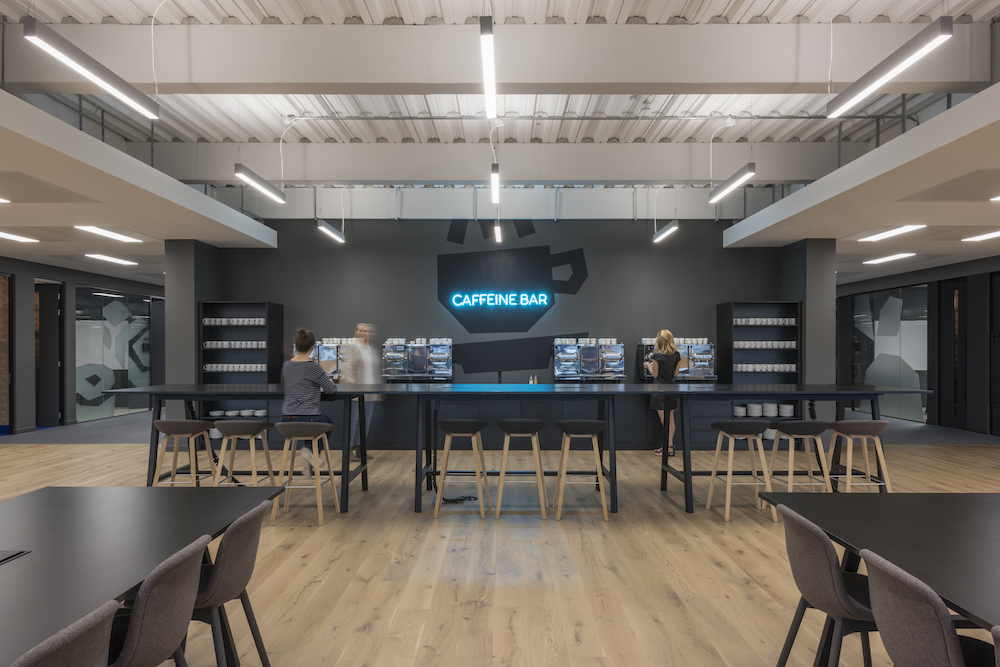If the return to the office is to be successful now, Stuart Finnie of Unispace says a rethink on how the space is used is needed by all.

Following two years of varied Covid-related restrictions, offices have slowly been re-opening their doors to staff as calls to work from home relaxed. However, for many employers , the expected rush of people back to the physical office didn’t happen, at least not on the scale that businesses were expecting. We’ve seen employers introduce hybrid working set ups to embrace the evolution of the workforce imposed during the pandemic, yet there is still some reluctance to return to the office. But why, and how can the physical workspace itself help address this issue?
A reluctant workforce
Recently commissioned European research combined the results of an in-depth survey of 3,000 office workers, 2,750 employers in leadership roles at organisations with 50+ employees, and interviews with global senior leaders in Real Estate, HR and Operations. The core focus of the study was to look at the return to the office, how reluctant people are and what will encourage staff to head back to the physical workspace once again.
What we found was rather interesting. The majority (64%) of office workers across the continent revealed that they were reluctant to return to the workplace, with Irish respondents indicating the greatest reticence of all (83%). When asked why they were concerned about going back, a number of key themes stood out across Europe – and interestingly none of them were focused on catching Covid itself.
As we may expect, the flexibility of working remotely was one of the top drivers of reluctance for European office workers, with over four fifths (86%) of the employees polled revealing that they had a better work / life balance when working remotely. Linked to this, the second greatest driver of reluctance was the time taken to commute, which is perhaps unsurprising given that 56% of respondents indicated that their journey takes up a significant part of their day and a further 48% revealed the commute was physically tiring.
Interestingly, though, almost a third (32%) of workers reported that they just simply didn’t see a need to return to the workplace which is arguably being driven by the fact that 40% of those surveyed found it easier to work away from the office and 22% felt more effective working in a quiet space from home.

The impact on the office
With so many employees across Europe needing more of an incentive or reason to return to the workplace, it’s perhaps no surprise that the businesses we surveyed have begun taking steps such as introducing flexible working hours and offering financial incentives including paid travel or free lunches to entice people back. However, when we drill down into the data further, we can see that the office space itself is also a barrier for reluctant returners.
A staggering 95% of employees indicated that they would make changes to their physical workspace. When asked what they would change, it became apparent that how workspaces are set up simply isn’t working for staff in the new business landscape. Respondents indicated that they would improve the physical space and layout, add more private areas, increase the amenities available and add more outdoor areas. In essence, they would change most of the current design as it stands.
In essence, they would change most of the current design as it stands.
Much of these desires from future office spaces are reflective of two key drivers, the first of which is the fact that the ability to work from home has changed the perception of what people want or need in the workplace.
Prior to the pandemic, the traditional workplace was accepted as it was. Open plan offices were widely common, though some sectors such as financial services still had the usual corner offices that everyone wanted to earn (though this concept is on the verge of extinction in the modern world). However, having worked from home for the best part of two years, staff have experienced a new way to work and they’re less inclined to simply accept that the office design is what it is.
As a case in point, the study revealed that 77% of workers across Europe found it much easier to have private conversations from home. Returning to an open plan office will, understandably, be a cause for reluctance for some who have valued being able to get their heads down at home.
Returning to an open plan office will, understandably, be a cause for reluctance for some who have valued being able to get their heads down at home.
The hybrid way of working has also made some spaces unusable for remote and in-person staff. For example, meeting rooms with limited or no audio and visual set ups will reduce those joining meetings remotely to a small square on a laptop with sound limitations, which will only lead to those not in the physical workspace feeling excluded. And having spent so long instantly enabled from home to have private or sensitive conversations with clients and peers, trying to handle these in an open-plan workspace will only lead to large meeting rooms being clogged up by individuals running a one-to-one phone or video call.
Office design now needs to provide staff with the set up to be able to take the benefits they’ve experienced working remotely in the last two years and bring them into the workplace. Having quiet and private spaces to allow for video calls and sensitive conversations as well as separate areas for creative collaboration will encourage more people to return to the office as it gives them a combination they simply can’t replicate at home.

Adapting to nuances
While the results of the study showed a clear desire for a new way of thinking when it comes to office design, it’s also important to highlight the geographic, demographic and sector nuances in these wants and needs. When we look into the finer details of the recent study, there’s a wealth of differences in responses based across Europe. For example, employees in Germany and Switzerland are more likely to generally like their office (71%), while staff in Spain feel more positively about their commute than any other location, with 61% happy with their travel arrangements.
Similar nuances can be seen across sectors. As a case in point, staff in the professional services sector were some of the only respondents where those keen to return to the workplace indicated that it was because the office had better IT facilities. In comparison, those in the Financial Services sector indicated they were more eager to return as they’d missed the social interaction and opportunity to collaborate with colleagues. This information is crucial in developing spaces that work for each individual business.
The psychology behind workplace design is a whole other topic in itself, but for now, designing spaces that encourage returning to the workplace will need an approach that is tailored to the company, its people and its clients.
Forming new workplace habits
We have to remember that it takes 21 days to form a new habit. Office workers have faced almost two years of forced remote working which will be a difficult habit to break, even for those that have been looking forward to returning to the workplace. While it’s the role of employers to agree the working formula that best suits their staff, it is our role as architects and workplace designers to create spaces that people want to use. In today’s environment, that doesn’t just mean a workplace that looks good, it also needs to be seamlessly functional in a hybrid working world. If the return to the office is to be successful now, a rethink on how the space is used is needed by all. Re-designing the workplace so that it provides employees with what they really need today will prove valuable for employers as they look to not only get people back to the workplace, but also attract new hires.

